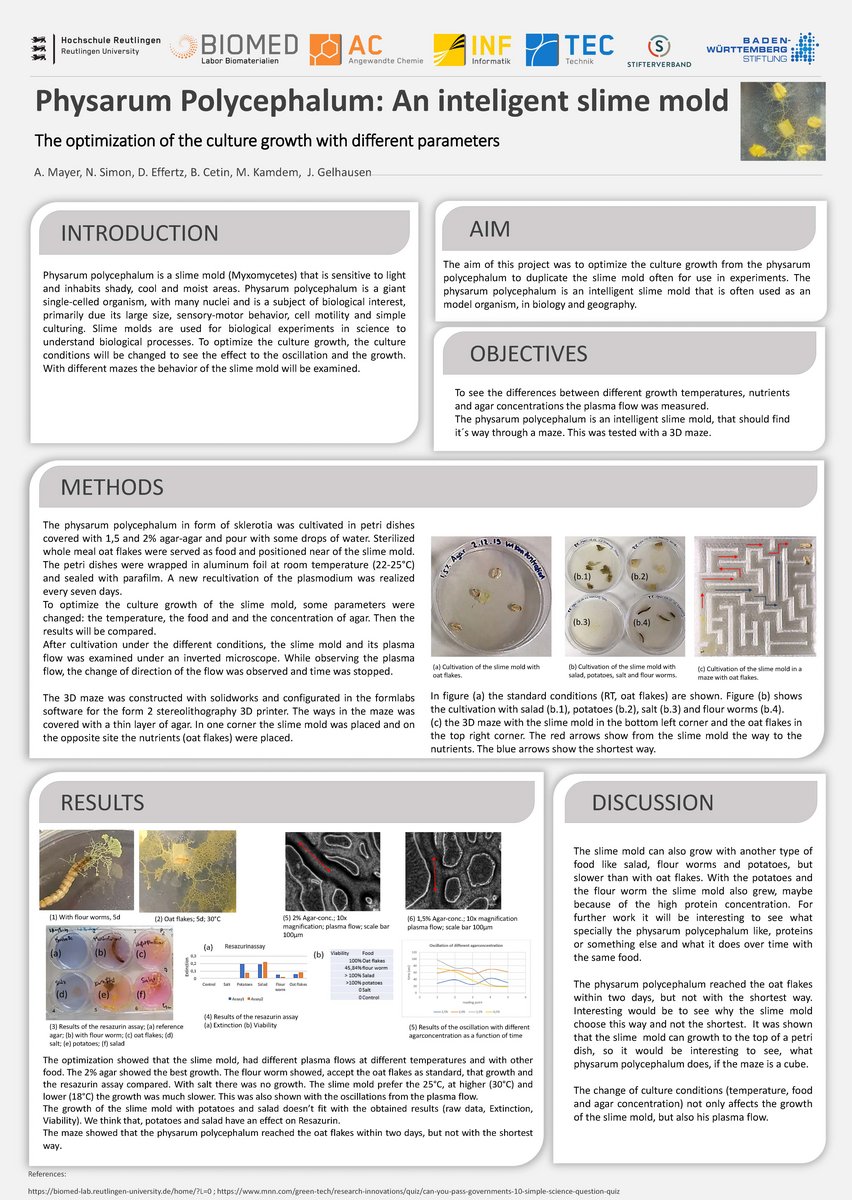

Student Maker Space -
The BioMed-Lab
Students work in teams on scientific projects and according to the principles of project- and research-based learning. The teams follow the process of a typical scientific project: think, make, communicate! Experienced scientists and engineers support them as coaches.

Think, make, communicate!
Students can work with various methods and laboratory techniques from chemistry and the life sciences, such as scanning electron microscopy, modern light microscopy methods, spectroscopy methods, material characterisation equipment, various 3D printing systems, real-time PCR and other biological methods. Students also have access to a fully equipped cell culture laboratory.
Project examples
The aim of this project was to construct a liver-on-a-chip system with which the hepatotoxicity of drugs can be analysed. This is an important topic, as every drug or therapeutic must be tested for hepatotoxicity during safety evaluation. Current in vitro models use two-dimensional cell cultures that are not physiologically representative. In order to eliminate the discrepancies in cell morphology, physiology and metabolism, the students carried out this project with the aim of improving the current state of the art. A three-dimensional liver-on-a-chip system was constructed. The results are presented in the accompanying poster or can be viewed in the accompanying YouTube video.
Ultrasound is an important diagnostic tool in medicine, but it is difficult for trainee doctors to learn. One of the most difficult parts is interpreting the ultrasound images. A training device would therefore be very helpful for practising ultrasound diagnostics and interpreting the images. A group of students have therefore developed a training model for breast cancer diagnosis. The results are presented on the poster or can be viewed in the accompanying YouTube video.
Antibacterial coatings have a wide range of applications, from household items to hospital equipment. Most of these coatings are made from non-recyclable and non-natural materials. However, antibacterial coatings of natural origin would be a sustainable and sensible alternative. In addition, the natural extracts could be used as an antibiotic alternative to prevent bacteria from developing further resistance to existing antibiotics. The aim was to develop an antibacterial coating using beeswax as a natural base. The antibacterial components in our case would be ginger extract and manuka honey, a special honey with a natural antibacterial compound called MGO. We prepared different concentrations of each extract and tested the coating for its antibacterial properties using an ISO 22196 test. The results are presented on the poster below or can be seen in the accompanying YouTube video.
Physarum polycephalum, a slime mould, is a biological organism that has recently been used to solve geographical problems. It has been used to recreate complete road networks and solve labyrinths. The ability of Physarum polycephalum to optimise traffic networks is sometimes incredible. In order to improve the reproduction and growth of the slime mould, a student research group has embarked on this project. This project is the prelude to numerous Physarum polycephalum projects in our laboratory. The results are presented on the poster below or can be viewed in the accompanying YouTube video.
Organ failure is one of the greatest medical challenges in our society. Due to the shortage of organ and tissue donors, methods such as tissue engineering are becoming increasingly important. A rejection reaction can be a life-threatening side effect of transplants. To avoid this, attempts are being made to transplant the body's own cells into a matrix or scaffold in order to generate artificial organs. However, scaffolds of animal or human origin are very expensive and harbour ethical risks. Therefore, decellularised plant leaves were investigated in this project as a potentially suitable scaffold for recellularisation with different cell types. The results are presented in the poster below or can be viewed in the accompanying YouTube video.











